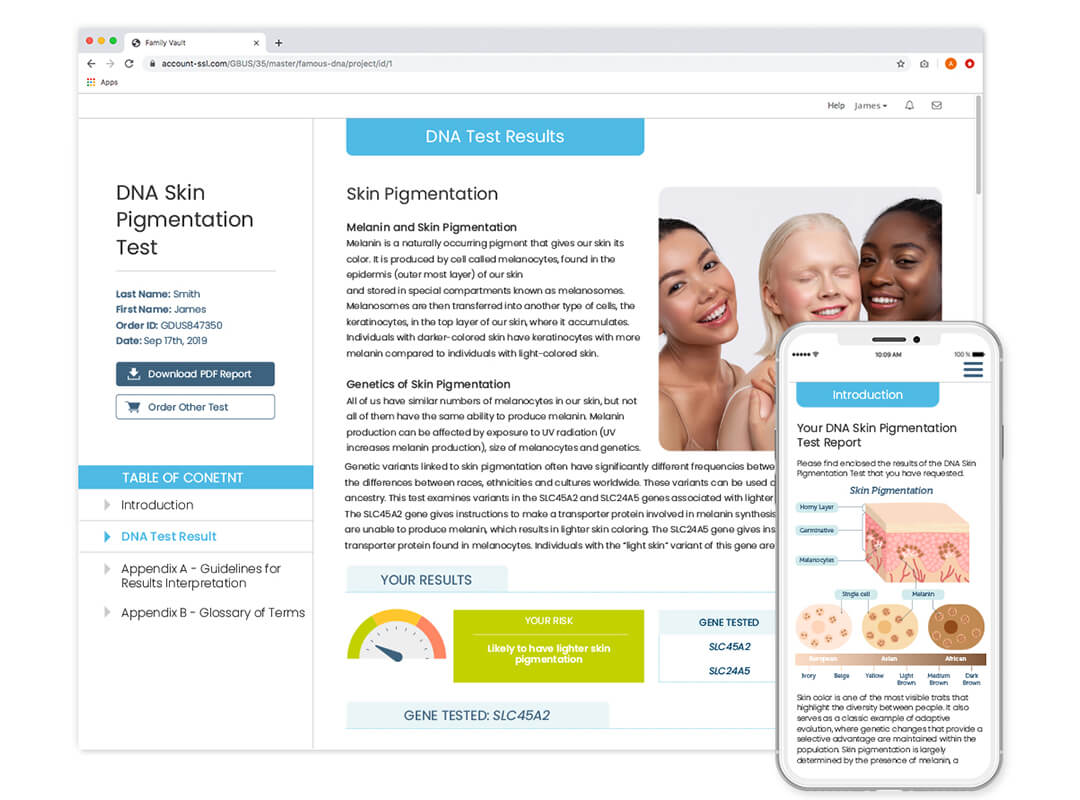Skin Pigmentation DNA Test
Discover the link between genetic variants and skin pigmentation with this DNA test.
- Includes variants of the SLC45A2 and SLC24A5 genes linked to skin color
- Individuals with these variants are more likely to have lighter colored skin
- 100% private and confidential online results
Already have DNA markers? Sign in and upload your data to view results.
Need to take the DNA Test? Order our easy-to-use swab kit.





